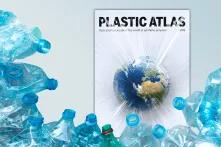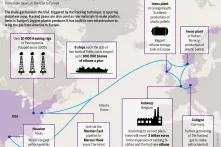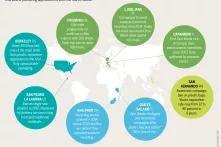Plastic waste is the most visible problem of our plastic crisis. Whether in rivers, on land, or in the ocean, enormous amounts of plastic waste are already polluting the entire planet.

Throughout the entire lifecycle of plastic, from production to use and disposal, both humans and animals, as well as the environment, are exposed to a wide range of risks.
The massive use of plastic began in the second half of the 20th century with the discovery that a waste product of the chemical industry was suitable for producing the plastic PVC. The 1950s marked the beginning of our current throwaway mentality. The demand grew rapidly, and the industry began to simplify supply chains and save money by disposing of packaging and plastic bottles after use.
Plastic has become omnipresent: it is found in plastic bags, smartphones, cars, cosmetics, toys, and clothing. Worldwide, 400 million tons of plastic are produced each year, with the majority being single-use products and packaging. Many everyday products are used only once, often for a short period, before ending up as waste. Almost half of all products become waste in less than a month.
Only a fraction of all plastic ever produced has been recycled, a mere 9 percent. Currently, the global recycling rate for plastic packaging stands at only 14 percent, with 40 percent ending up in landfills and 14 percent in incinerators. The remaining 32 percent simply remains in the environment. Europe and North America also export a large portion of their plastic waste (which is then considered recycled), primarily to Asia. This shift also transfers the negative consequences to countries with inadequate or no waste management systems.
Export of Plastic Waste
In 2018, Germany exported over 740,000 tons of plastic waste, primarily to Malaysia and other Asian countries. Since China recently closed its doors to plastic waste from abroad, Southeast Asia has become the primary destination for waste exports. However, even here, landfills are overflowing, and plastic waste is either burnt or ends up in the environment, especially in rivers, the ocean and on beaches.
How Plastic impacts the Environment
The impacts of plastic and microplastic in the ocean have become a widespread issue. We are all familiar with images of marine animals and seabirds dying from plastic bags or remnants of fishing nets. Seabirds such as the albatross accumulate a volume of plastic in their stomachs over their lifetime equivalent to a whole plate of plastic for humans. Yet, few know that countless small plastic particles are also present in our soils and inland waters. Pollution here is even between four to 23 times higher than in the sea. Worldwide, about 6.5 million tons of plastic are used annually in agriculture.
Expanding Solutions beyond Recycling
Governments are beginning to regulate the consumption and disposal of plastic in some areas. However, more waste separation and recycling will not solve the plastic crisis if the plastic industry continues to thrive and expand. Solutions and alternatives are needed at all levels. Plastic is now a prominent topic on the political agenda, and global movements like 'Break Free From Plastic' are gathering more and more people engaged in combating plastic. Initiatives for 'Zero Waste' policies in cities and communities worldwide are emerging, showcasing ways to avoid and reduce plastic waste.




